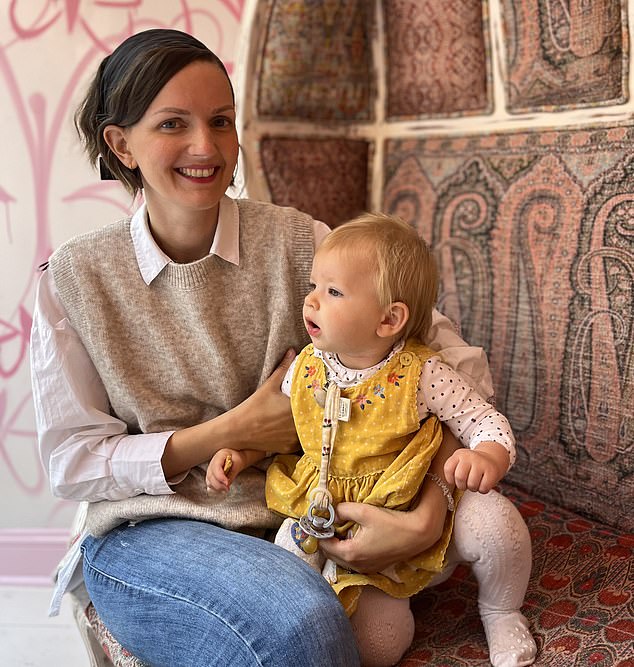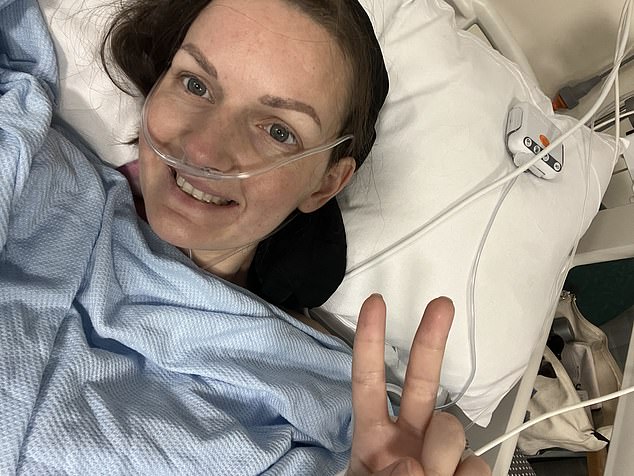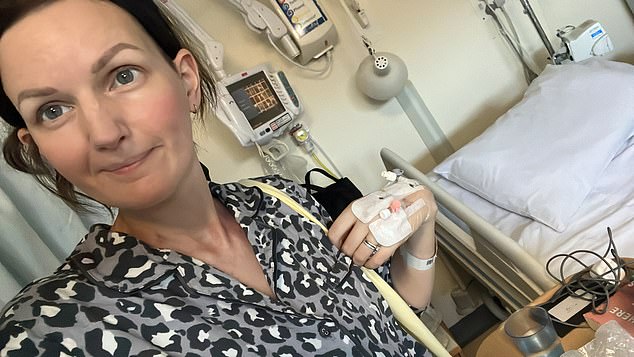After nearly 18 months of grueling breast cancer treatment, Jess Parsons finally received the news she had been waiting for late last year: her tumor was gone.
“It was an incredibly emotional moment,” says the 38-year-old who works in human resources. “I was crying my eyes out. It had been a back and forth, a year and a half not knowing if I would see my two children grow up, go to university or get married.’
But just five weeks later, in early January, Jess, from Bath, received devastating news. She had developed cancer again, this time in the other breast. What’s more, it was a completely different cancer and unrelated to her first diagnosis.
Jane Murphy, clinical nurse specialist at Breast Cancer Now, says: “Having breast cancer before the age of 50 is rare in itself, so being diagnosed twice in such a short time is extremely rare.” I have never seen a case like this.”
Not only was the event a medical anomaly, it was also a crushing blow to Jess and her family, who had just celebrated her good health and began planning for a cancer-free future.

After almost 18 months of grueling breast cancer treatment, Jess Parsons (pictured) finally received the news she had been waiting for late last year: her tumor was gone.


Just five weeks later, in early January, Jess, from Bath, received devastating news. She had developed cancer again, this time in the other breast.
“It was horrible,” says Jess. ‘I thought there must be some mistake. Not even my surgeon could understand how he had cancer again so soon and that it had nothing to do with the first tumor. My husband, Matt, was shocked. “Nobody could believe what was happening.”
Approximately 55,000 women and 400 men in the UK are diagnosed with breast cancer each year, approximately one case every ten minutes. Huge advances in treatment over the last decade mean that nine in ten are still alive five years after being diagnosed.
However, survival rates tend to be lower if the tumor, known as primary cancer, has migrated to other parts of the body, such as the other breast, lungs, liver or brain. This is known as secondary cancer and is not the same as developing a new type of cancer.
Some research suggests that people who have had cancer before have a higher risk of developing a second primary tumor at some point later in life, but cases in which this occurs within months are almost unheard of.
Jess, who has an eight-year-old son, Stanley, and a two-year-old daughter, Ines, was just 36 years old in 2022 when she discovered a lump in her right breast while breastfeeding newborn Ines. He raised it with his family doctor, but at the time he wasn’t worried that the lump could be cancer. “I thought it was probably a blocked milk duct or a cyst; I was too young for it to be cancer,” he says.
But a biopsy at the Royal United Hospitals Bath confirmed that Jess not only had breast cancer, but it was a very rare type of tumour. This disease, called metaplastic squamous cell carcinoma, accounts for less than two percent of breast cancer cases. The causes are largely unknown. “It’s so weird I was scared they wouldn’t know how to treat it,” Jess admits.


What makes Jess’s case even more remarkable (and terrifying) is that she has no family history of breast cancer, which is a key factor that determines the likelihood of cancer occurring.
What makes Jess’s case even more notable (and terrifying) is that she has no family history of breast cancer, which is a key factor determining the likelihood of cancer occurring. Subsequent DNA testing also revealed no obvious genetic mutations that would increase Jess’ risk for the disease.
What followed was a harsh treatment regimen of chemotherapy, radiotherapy and immunotherapy – drugs that train the immune system to fight cancer. Jess also underwent a mastectomy – the surgical removal of her right breast.
When the tumor was removed, it had grown to about 7.5 cm, about the size of a peach.
‘Chemotherapy was very hard for me. I managed to prevent too much hair from falling out, but the fatigue was paralyzing. One second I was talking to Matt on the couch and the next I was losing my mind. It was so bad that I couldn’t be alone with Inés, who was a baby at the time.
A CT scan in November brought the news Jess had longed for: the cancer was gone. “I felt like I had been suffocating for 18 months and I could breathe again,” she says.
She was so relieved that she almost missed her annual breast cancer exam in her left breast a few weeks later.
Because people who experience breast cancer early in life are considered to be at risk of recurrence, they are invited to have an x-ray to screen for breast cancer, called a mammogram, every year after treatment until they turn 50. They are then invited to routine examinations. , offered to all women ages 50 to 71 every three years.
Younger women are not offered mammograms because their risk of developing the disease is low, but they are encouraged to check their breasts periodically for lumps.
Jess changed her mind about skipping the test after a cancer nurse explained that a mammogram can often detect cancer cells that a CT scan misses. Her decision could have saved her life.
“A week or so later I received a letter from the NHS breast screening service saying they had highlighted something suspicious in my left breast that needed investigation,” she says. “I started hyperventilating. “It was a really difficult moment.”
Jess underwent another biopsy and received the heartbreaking news in January that she had breast cancer for the second time.
The new tumor is different from the first: a ductal carcinoma in situ, a very early form of the disease that affects the milk ducts.
Jess has had a second mastectomy and is about to start chemotherapy. “I’m still in shock, but I’m also hopeful because we caught it early,” she says.
Experts say it’s crucial for women who have had breast cancer not to put off screening.
“Anyone who has had breast cancer in one of their breasts has a slightly increased risk of developing a new primary breast cancer,” says Sally Kum, associate director of nursing and health information at Breast Cancer Now.
“That’s why it’s vital that they continue to check their breasts and check for anything unusual.”
Jess agrees: ‘I’m so glad I had the mammogram. I urge all women who have the opportunity to do so and anyone who is too young to undergo an examination to check their breasts regularly.’
To participate in Breast Cancer Now’s Pink Ribbon Walk, visit breastcancernow.org/prw
